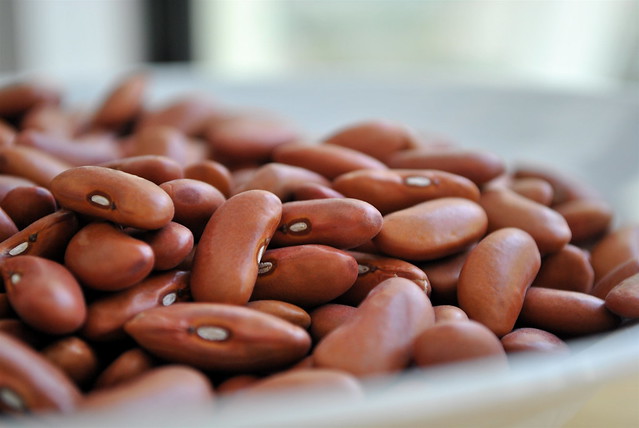Never heard of pulses (aside from the kind that show your heart is still beating)? Not to worry, we’ve got you covered. First off, pulses are the dried, edible seeds of members of the legume family, and include beans, peas, chickpeas and lentils. Fresh beans and peas, soybeans and peanuts, while legumes, are not pulses. Pulses have a lot of nutritional value and the body of research on their health benefits is steadily growing. Unfortunately, pulses score few popularity points among consumers in the U.S. and Canada, despite being widely consumed around the world. Here’s why it’s time to start putting more pulses on our plates.

The Plusses of Pulses
Nutrient-dense and gluten-free, pulses provide a good dose of protein (about twice as much as grains) and fiber, and are a source of many vitamins and minerals—all for relatively few calories and very little fat or sodium. Recent research has shown that people who consume the most pulses have better intakes of protein, fiber, folate, zinc and magnesium, as well as several other nutrients.
Beyond straight nutritional bennies, studies on the possible health impacts of eating pulses are popping up with increasing frequency. Most recently, a meta-analysis (a review and statistical synthesis of results from many studies) that included 26 studies indicated that pulses appear to significantly lower LDL (a.k.a., “bad cholesterol”) when one serving is eaten daily. This is good news for those who prefer to use dietary approaches to lower their blood cholesterol levels and improve their cardiovascular health. Most of the studies used beans as the primary pulse. Reduced risk of metabolic syndrome is another health benefit of pulse consumption that continues to be studied.
The Lectin Issue
Pulses and legumes (as well as nearly all plant foods) contain a natural toxin called lectin, which is the plant’s way of defending itself from roving hungry insects and animals. Too much lectin in the diet can lead to stomachaches, vomiting and more serious gut and health issues. Beans have higher levels of lectin (especially kidney beans) than other pulses. Is this a problem? Well, most of us consume lectin every day to no ill effect. Research on the negative health effects of lectins has been done with animals mainly, and involves giving them artificially high amounts—substantially more than humans would get from a normal, healthy diet. Bottom line: lectin is not a reason to avoid eating legumes or pulses.
Besides, there is an easy way to combat the whole lectin issue, and that is to cook them. Soaking, fermenting, sprouting and cooking legumes destroys nearly all the lectin they contain. Problem solved (and frankly, I’m not sure who eats uncooked dried peas, beans and lentils anyhow). Another benefit of soaking beans is that it helps remove flatulence-inducing compounds called ooligosaccharides—that settles it, right? I’ve covered the basics about dried beans in a previous post, but here again are the general instructions for soaking and cooking beans. Lentils and split peas need not be soaked, just rinsed.
Pulses on the Plate
Tip 1: Although pulses are high in protein, they are not complete proteins. Combining pulses and grains, however, delivers a complete protein. Keep in mind that incomplete proteins do not need to be paired together in one dish or even one meal in order to do the job.
Tip 2: Canned beans are already precooked but can be high in sodium. Rinsing them and then draining in a colander helps significantly decrease the sodium. You can also buy low-sodium canned beans.
Tip 3: Pulses are generally inexpensive, and they are great for “stretching” more pricey animal proteins. Pulses plus a little meat/poultry/fish plus a generous amount of veggies makes a highly nutritious dish that won’t tax your food budget.
Tip 4: Pulses are highly versatile. Don’t be bound by the same old ways that you are used to eating them—there is a world of wonderful pulse recipes out there, many of them ethnic. You can make purees out of them for dips, thickening soups or mixing into casseroles. Purees can even be added to baked goods. Seasoned, cooked pulses are tasty served cold, so are perfect for salads. Pulses can be made into patties, tossed into all manner of side dishes, or serve as a “bed” for various entrees.
Tip 5: You can cook pulses on the stove top, in a pressure cooker, in a slow cooker and even baked in the oven. No matter the method, do not add acidic ingredients like tomatoes and vinegar to the pulses before they are tender or it will take a looooong time for them to finish cooking.
Because cooking pulses is not exactly a quick process (between soaking and cooking it can take several hours), it makes sense to cook a large batch and then divide it into 1-2-cup portions for freezing. Cooked pulses can last several months in the freezer, versus just several days in the refrigerator.